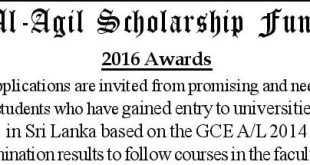 As the new year's fireworks lit up the night sky along the Thames in London – where, at its peak, so many had exploded that all one could see was a blanket of white light – I was reminded of the UNESCO initiative to be launched this year. The International Year of Light aims to promote the works of the famous scientist, who also happens to be a Muslim, Ibn Al-Haytham.
As the new year's fireworks lit up the night sky along the Thames in London – where, at its peak, so many had exploded that all one could see was a blanket of white light – I was reminded of the UNESCO initiative to be launched this year. The International Year of Light aims to promote the works of the famous scientist, who also happens to be a Muslim, Ibn Al-Haytham.
Born in the 10th century in Basra in what is now Iraq, Al-Haytham was a scientist whose contributions to math, astronomy, philosophy and optics have given him numerous accolades, least of which is the title, “father of modern optics”. While he built on Ptolemy’s 2nd century works, Al-Haytham was the first to identify the correct model of vision: that rays of light reflected off objects and then entered the eyes.
Muslim contribution to science
The year will be officially launched at the UNESCO head office in Paris in January, in partnership with 1001 Inventions, an initiative that has been touring the world for the past few years, demonstrating the Muslim contribution to science.
At the launch in Paris, over a thousand academics and politicians will attend a two-day event, sharing insight on science, information, technology and even on how light influences and affects art and culture. Despite the glory associated with scientific Muslim heritage, Al-Haytham’s most celebrated text, Kitab al-Manazir (The Book of Optics), was actually authored while he was under house arrest in Egypt. And perhaps herein is a lesson for us all.
When at ease, the mind often rests and becomes lazy. Some seek comfort in this state of affairs, choosing not to take advantage of the opportunities ease brings. Yet in difficulty, a person is pushed to question, to challenge, to discover, and even to improve. This is perhaps why entrepreneurs are identified as disruptors to a marketplace. For being unsatisfied with the status quo, seeking to challenge the accepted norm, and proposing a better way to do something is part of the religious obligation to grow, learn, discover and ultimately become closer to God.
And so it is with the Year of Light, which is not just a reminder of the past but an effort to grasp the future with a focus on light-based technologies. The aim is to encourage “sustainable development and provide solutions to the worldwide challenges in energy, education, agriculture, communications and health.” Part of this framework includes a number of other UNESCO-partnered initiatives. The Maimonides Foundation in London has partnered with Interfaith Explorer to deliver a six-week interactive learning tool that enables primary school children to learn more about the three Abrahamic religions.
It thus addresses the often-misunderstood notion that people of different faiths cannot live alongside one another in peace. Indeed, historically, it has only been during periods of dialogue and engagement when people of different faiths lived alongside one another in peace. The best example for us as Muslims is during the time of Prophet Muhammad, when his neighbor for many years was a Jewish man. Or the example of Caliph Umar who set up a pension trust, the first recipient of which was a Jewish man in Medina. Light is not just about what is visible, but also about discovering the best of a common understanding.
Different meanings of "Light"
Al-Haytham was also the inventor of the world’s first pin-hole camera after noticing how light came through a hole in some window shutters, concluding that the smaller the hole the better the picture.
Today, camera manufacturers are investing millions in the development and management of light on camera sensors. Consumers are often misled to believe that the higher the megapixel count on a camera the better the image, only to discover, for example, that a 41 megapixel camera phone from Nokia takes worse photographs than a first generation Canon 5D, which only captures 12.8 megapixels. Why? It’s because of the way reflected light is managed on the sensor.
To better understand and manage light, a patent recently filed by Olympus demonstrates how a multiple shot photo combined with sensor shift technologies will reduce blur and noise resulting in a cleaner photograph. All of this and so much more in so many fields were made possible by Al-Haytham’s discoveries. A truly fitting tribute to Al-Haytham would be for people to continue to extend scientific discovery, fulfilling the statement of Prophet Muhammad that the best of people are those who add value to society.
As Muslims around the world celebrate and remember the birthday of Prophet Muhammad, some mistakenly interpret him to be 'light' while the Qur’an informs us clearly that Prophet Muhammad is a human being like all other human beings. Thus, instead of misrepresenting his identity as light, we should look towards his example and that of all of the other prophets, who all preached the same singular message: the belief in one God.
If light can be understood in its abstract form then this international year should not just be about remembering the past, nor creating a scientific-technological set of solutions for the future, but also about stressing the importance of comprehension, understanding and dialogue, such that all of humanity can benefit from each other.
Source : http://www.onislam.net
 Sri lanka Muslims Web Portal Diversity and Inclusiveness
Sri lanka Muslims Web Portal Diversity and Inclusiveness



